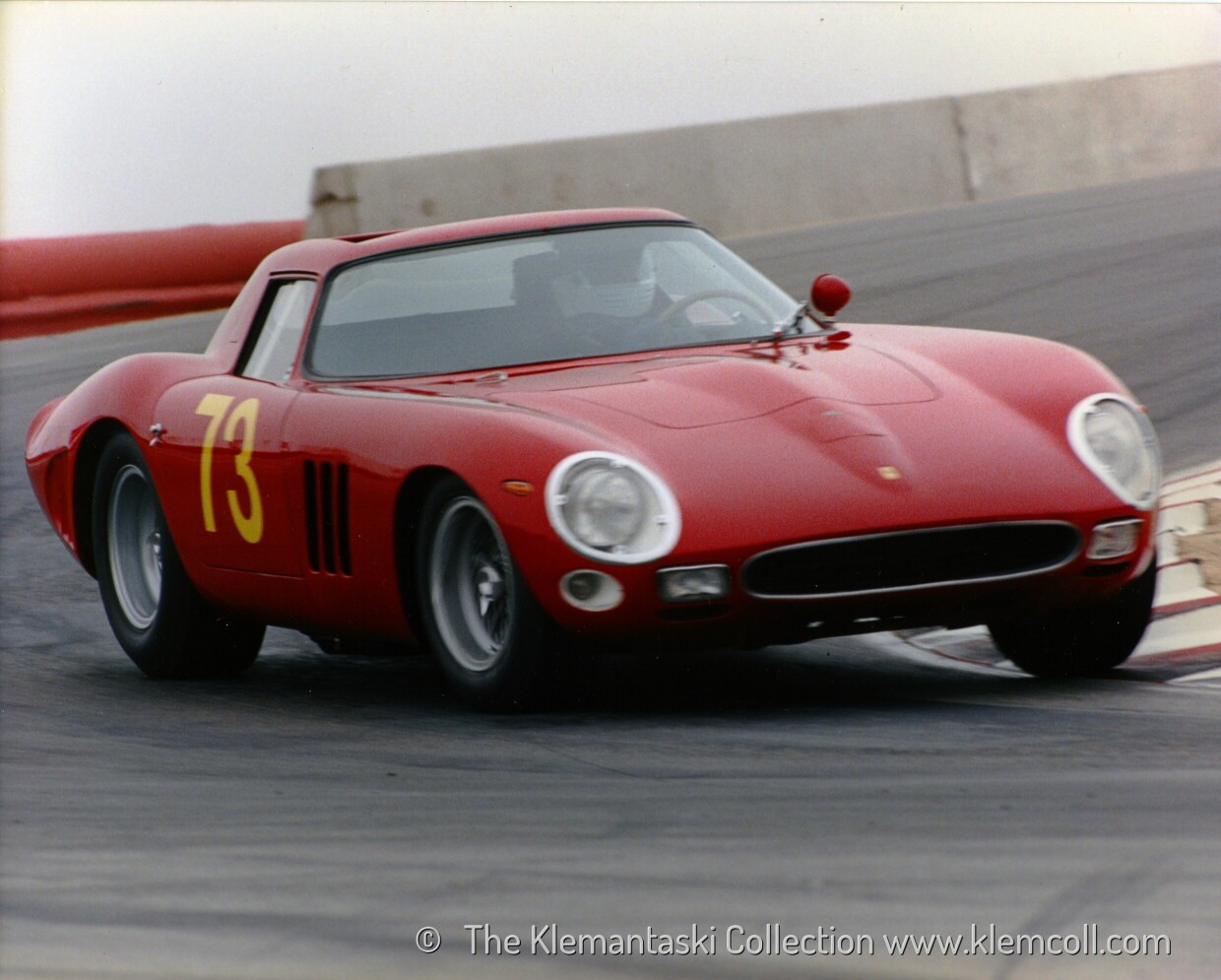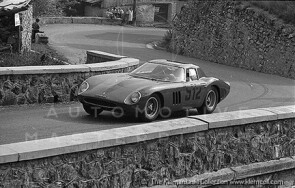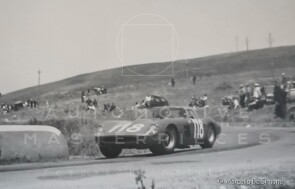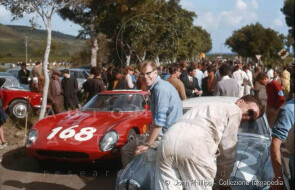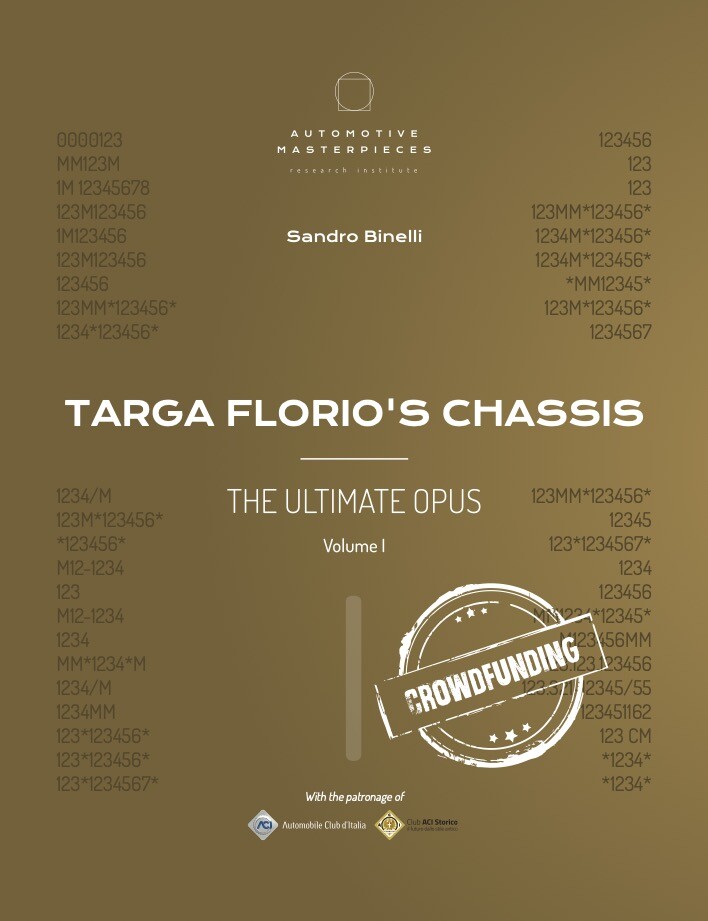
1962 Ferrari 250 GTO
ON/OFF
Why am I an Automotive Masterpiece?
L. Limited edition cars
no. 7 manufactured, 2nd built
The Ferrari 250 is a series of sports cars and “granturismo” built by Ferrari from 1952 to 1964. The company's most successful early line, the 250 series includes many variants designed for road use or sports car racing. 250 series cars are characterized by their use of an engine designed by Gioacchino Colombo, with the exception of the 250 Europa. This engine was the “Tipo 125” with a displacement of “just” 2953 cc, but it was light and powerful. The 250 series was replaced by the 275 and 330 series cars.
The 250 GTO represents the pinnacle of the Ferrari 250 series. Designed to dominate the Gran Turismo category of the World Sportscar Championship, it was officially unveiled in February 1962. The acronym “GTO” stands for “Gran Turismo Omologata,” reflecting the need for homologation as a road-going car under FIA Group 3 rules, which required at least 100 units. In reality, only 33 cars were built with the original bodywork, plus three “Series II” examples (and three “Series II” converted from existing chassis), for a total of 36. The engine was the celebrated 2953 cc “Colombo” V12, type 168/62, derived from the 250 Testa Rossa unit. It featured six twin-choke Weber carburetors, twin ignition, and produced around 300 hp at 7500 rpm. A five-speed gearbox, instead of the usual four-speed found in previous 250 models, allowed greater flexibility and control, especially in endurance racing. The chassis was derived from the 250 GT SWB but lightened and reinforced, with revised suspension, widened track, and a Dunlop disc braking system. The bodywork, initiated by Giotto Bizzarrini and finalized by Sergio Scaglietti, was also tested in a wind tunnel—a rare process at the time. The result was a sleek and purposeful shape, with a long, low nose featuring three signature air intakes and a Kamm tail that enhanced high-speed stability. The GTO debuted at the 1962 12 Hours of Sebring, finishing second overall. Over the next three years, it scored numerous class victories in major international events such as the Targa Florio, Tour de France Automobile, and 24 Hours of Le Mans. It was instrumental in securing Ferrari’s World Championship for Manufacturers titles in 1962, 1963, and 1964. The GTO was driven by both factory drivers—Hill, Bandini, Scarfiotti, Rodriguez—and private entrants, thanks to its reliability and drivability. Although a pure racing car, the GTO remained road-usable, in keeping with the GT philosophy of the era. Each car was handmade and tailored to the needs of its driver or team, making every example unique in both technical and historical terms. From an aesthetic standpoint, the 250 GTO is regarded by many as the most beautiful Ferrari ever built. The balance between taut lines and flowing surfaces, the clean design, and the lack of unnecessary ornamentation gave it a timeless style. This beauty, combined with rarity and racing pedigree, has made the GTO one of the most sought-after collector cars, and its value has reached extraordinary heights. Beyond economics, the GTO stands as an unrepeatable peak in automotive art: it was the last front-engined Ferrari race car to win at the international level, symbolically closing the era when racing cars could still be driven on public roads.
The Ferrari 250 GTO, chassis no. 250 GT*4091*, is the 22nd among the 33 “Series I” GTOs built (chassis from no. *3223* to *5111*). It is the second of four “Series I” examples converted at the end of 1963 into a “Series II” or GTO/64 (the others being chassis nos. *3413*, *4399*, and *4675*). It is also the second of all seven GTO “Series II” or GTO/64s (including chassis nos. *5571*, *5573*, and *5575*). Chassis no. 250 GT*4091* was registered in December 1962, in Series I configuration and metallic grey livery, to Compagnia Romana Alberghi, owned by the racing driver Sergio Bettoja—a prominent figure in the hotel industry and a passionate car enthusiast. There is no confirmation that he competed in any events, and the car returned to Ferrari at the end of 1963, by which time Maranello was already working on the 250 Le Mans project. Pininfarina was tasked with designing a new body for the 250 GTO. The carrozzeria created a berlinetta with a markedly aerodynamic design and wider track, resulting in a more aggressive, though less harmonious appearance. The wide front end, with Perspex-covered headlights, was now flatter, with a single, narrow air intake. The most significant changes were to the central and rear sections of the car, where Pininfarina anticipated solutions that would appear on the 250 Le Mans: a sharply raked windscreen and a roof that ended abruptly and continued as a flat panel tapering into the rear, connected by a sort of roll bar. As with all GTO/64s, the car featured a Kamm tail, accented by a spoiler. In this case too, Carrozzeria Scaglietti was the actual builder of the bodywork, for this version based on a design by Pininfarina. The mechanicals remained unchanged. In February 1964, 250 GT*4091*, now in its new bodywork, changed ownership and license plate, moving from Rome to Varese, where it was acquired by Edoardo Lualdi Gabardi—textile entrepreneur and one of the most successful Italian “gentleman drivers” of the 1950s and 1960s, and one of the pioneers of the Sant’Ambreus racing team. Thus began a rich and successful four-year racing career. The debut came in April 1964 at the Stallavena–Bosco Chiesanuova hillclimb, where Lualdi Gabardi immediately achieved first in class and second overall. This marked the beginning of a long string of victories. In major Italian and European races—in Germany and France—the car was very often, if not always, first in class and among the top overall finishers. In January 1965, the car moved south and came into the hands of Sicilian driver Clemente Ravetto, who continued its racing career. 250 GT*4091* remained a winning car, achieving an excellent class victory and 39th overall at that year’s Targa Florio. A new driver-owner arrived in 1966: Antonio Reale, who took the car to fourth in class at the 50th Targa Florio. In 1968, the car left Italy and appears to have retired from competition, relocating to the United States, where it was acquired by American enthusiasts including SCCA driver Fred Knoop. In 1974, it was restored by Stephen Griswold’s shop in Berkeley, who recalled: "The car had a hard racing life, so it was necessary to replace most of the nose because the metal was used up. The engine was a series 2 spec with smaller chokes in the carbs and used an exhaust system with smaller primaries of the same diameter as the 250LM. It put out 310 hp on the dyno and went like a rocketship. It had a very low final drive 5 /1 for hillclimbs. Fred preferred acceleration to top speed so this was left as it was." On that occasion, the body was painted dark red. The interior was painted hammertone silver, and the seats were upholstered with blue work cloth. In 1978, it was acquired by Bob Epstein, who had it repainted in brown—his signature color. Barely a decade after leaving Italy, the car was back on the track, racing in a historic competition at Laguna Seca with Epstein. According to some sources, a new owner, Steve (Scott) Borman, commissioned another restoration from Steven Griswold. Borman was not fully satisfied with the result, and the car was further restored by Peter Sachs. In 1982, now back in dark red, the car appeared at the Nürburgring with Sachs at the wheel. With him as a driver, the car began a long and distinguished career in major historic events, participating in the most prestigious competitions and concours in the following years, often earning significant awards.
